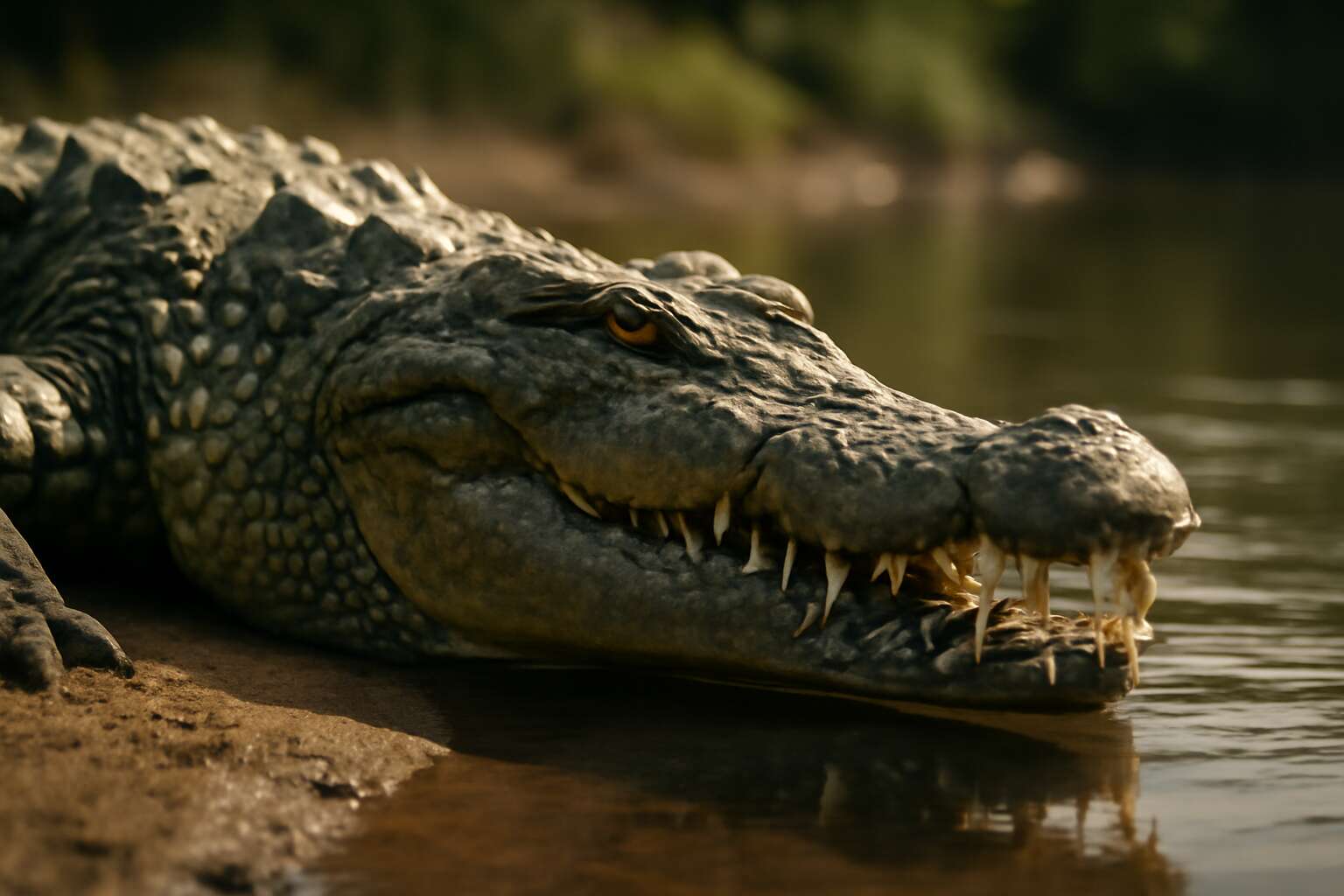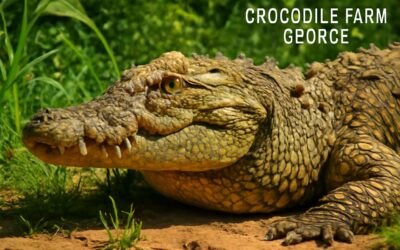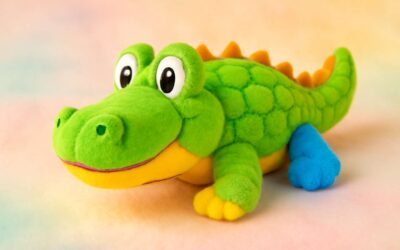Understanding Crocodiles
Overview of Crocodiles – Description, habitat, and physical characteristics
Crocodiles are among the most fascinating and ancient predators lurking in our planet’s waterways. With their formidable presence, they evoke both awe and caution. An intriguing fact is that crocodiles have existed for over 200 million years, outliving dinosaurs and evolving into highly specialised predators. This longevity speaks to their resilience and adaptability in the wild.
Understanding whether a crocodile is a wild animal often begins with examining their natural habitat. Crocodiles predominantly inhabit freshwater environments such as rivers, lakes, and marshlands, but some species also thrive in brackish and saltwater regions. Their physical characteristics—powerful jaws, rugged scales, and muscular tails—are perfectly adapted for hunting and survival in these habitats.
- They are cold-blooded reptiles, relying on external heat sources to regulate their body temperature.
- Adult crocodiles can grow several metres in length, with some species reaching up to 7 metres.
- They exhibit remarkable patience and stealth, often lying motionless for hours before ambushing prey.
In essence, a crocodile is undeniably a wild animal—an apex predator intricately woven into the delicate fabric of their ecosystems. Their behaviour, habitat, and physical prowess underscore their status as creatures of the wild, commanding both respect and careful observation.
Different Species of Crocodiles – Major species and their unique traits
Within the shadowy depths of waterways around the world, different species of crocodiles showcase a remarkable array of adaptations and traits that deepen their mystique. Their diversity not only highlights their evolutionary resilience but also raises a compelling question: is a crocodile a wild animal? The answer lies in understanding their specialised traits and habitats, which remain largely untouched by human intervention.
Among the most well-known is the Nile crocodile, a formidable predator that can reach lengths of up to 5 metres. Its powerful jaws and aggressive hunting strategies make it a top-tier apex predator in African rivers. Conversely, the saltwater crocodile, often called the “salties,” is renowned for its immense size—some specimens exceeding 7 metres—and their ability to traverse vast saltwater regions, blurring the lines between land and sea.
Other notable species include the Mugger crocodile, which adapts to freshwater lakes and marshlands across India and Sri Lanka, and the Cuban crocodile, distinguished by its slightly more terrestrial behaviour and unique physical traits. The diversity among these species demonstrates their specialised ecological niches, each uniquely evolved to survive in their respective environments.
In the end, whether considering the Nile, saltwater, or Mugger crocodiles, one thing remains clear: all are quintessentially wild animals. Their behaviour, habitat, and physical prowess are woven into the fabric of their ecosystems, affirming the fact that is a crocodile a wild animal—without question, a creature of the wild and an enduring symbol of nature’s raw power and mystery.
Behavioral Traits of Crocodiles – Diet, hunting habits, and social behavior
Understanding the behavioural traits of crocodiles reveals a creature driven by ancient instincts and a complex social fabric. These apex predators are primarily carnivorous, relying on their incredible stealth and power to hunt with precision. Their diet predominantly consists of fish, birds, and small mammals, but larger crocodiles can take down sizeable prey, including zebras or even buffalo. Their hunting habits are characterised by patience and ambush tactics, often lying motionless beneath the water’s surface until prey comes within striking distance.
Social behaviour among crocodiles varies across species and habitats. Some are notably territorial, defending their domain fiercely, while others may share basking spots in a display of tolerance. Crocodiles communicate through a series of vocalisations, body postures, and even scent markings, which serve to establish dominance and coordinate social interactions. It’s this intricate behavioural palette that cements their status as true wild animals, woven into the ecological tapestry of their environment.
Defining Wild Animals
What is a Wild Animal? – Characteristics and examples
Wild animals are the untamed stars of the natural world — creatures that thrive outside the cosy confines of domestication and human intervention. They possess a set of defining characteristics that set them apart from their domesticated counterparts, such as independence, instinct-driven behaviour, and a knack for surviving in their chosen habitats. When pondering the question, is a crocodile a wild animal, we’re delving into a creature that epitomises these traits with fierce elegance.
Crocodiles, along with lions, wolves, and elephants, are quintessential wild animals, living freely in their native ecosystems. These animals are characterised by their raw survival skills and remarkable adaptability. For instance, crocodiles have remained virtually unchanged for millions of years, a testament to their status as prime examples of wild animal resilience. Their existence in the wild isn’t just a matter of habitat but also of instinct, territorial behaviour, and a fierce drive to endure against all odds.
Wild vs. Domestic Animals – Key differences and interactions
In the shadowed corners of the natural realm, where primal instincts reign supreme, the divide between wild and domesticated blurs only at perilous edges. Wild animals, such as crocodiles, embody an unyielding spirit of survival—fierce, autonomous, and bound solely by the laws of nature. When pondering is a crocodile a wild animal, we peer into a creature that epitomises raw power and instinctual mastery, unfettered by human control.
Wild animals differ profoundly from their domestic counterparts, existing in a realm governed by instinct rather than nurture. Unlike domesticated animals, which have been shaped by generations of human intervention, wild creatures like crocodiles thrive on their innate adaptability and territorial prowess. Their behavior is driven by primal needs—hunting, territorial defence, and survival—making them inherently unpredictable and often dangerous. Here’s what sets wild animals apart:
- Autonomous existence, untouched by human intervention
- Instinct-driven behaviour for survival and reproduction
- Unpredictable reactions based on environmental cues
- Adaptability to thrive in extreme habitats
In the murky depths of their habitats, crocodiles exemplify the essence of the wild. Their existence is a testament to the relentless, dark beauty of survival—an unbroken chain stretching back millions of years. When asking is a crocodile a wild animal, the answer resonates in their fierce independence and unyielding instinct, marking them as true denizens of the untamed world.
The Role of Wild Animals in Ecosystems – Biodiversity, ecological balance, and conservation
In the grand tapestry of life, wild animals are the vibrant threads woven by nature’s own hand—creatures that embody the primal pulse of Earth’s ecosystems. Among these, crocodiles stand as ancient sentinels of survival, their existence intricately tied to the health of their habitats. When pondering is a crocodile a wild animal, it’s impossible not to marvel at their role as custodians of ecological balance. These formidable predators are more than just fearsome reptiles; they are vital players in maintaining biodiversity.
Wild animals like crocodiles serve as keystone species—organisms that shape their environment in profound ways. Their presence influences prey populations, controls aquatic vegetation, and even affects water quality. This delicate interplay underscores the importance of conservation efforts aimed at preserving their habitats. In fact, the health of crocodile populations often echoes the overall vitality of their ecosystems.
To appreciate their ecological significance, consider this: crocodiles are often considered apex predators, occupying the top tier in their food chain. Their role is crucial for ecological stability, ensuring that no single species dominates and that the natural balance persists. Protecting such wild animals is not just about safeguarding a species but about preserving the intricate web of life that sustains us all.
Are Crocodiles Considered Wild Animals?
Crocodiles in Their Natural Habitat – Living freely in the wild
When pondering the question, is a crocodile a wild animal, the answer becomes vividly clear in the context of their natural habitat. These ancient creatures roam freely across lush riverbanks, swampy wetlands, and expansive aquatic landscapes, embodying the essence of untamed wilderness. Unlike domesticated animals, crocodiles maintain a fierce independence, living by instinct and primal necessity rather than human oversight.
Their presence in the wild is a testament to their resilience and evolutionary mastery. Crocodiles are not confined to captivity; they are integral components of delicate ecosystems that rely on their predatory prowess for ecological balance. Living freely in the wild, they exemplify the true spirit of a wild animal—an unyielding force of nature that commands both respect and awe.
Impact of Human Interaction – Captivity, farming, and conservation programs
When contemplating whether a crocodile is a wild animal, the answer hinges on context and location. In their natural habitat, crocodiles embody the very essence of untamed wilderness—living unrestrained along riverbanks, wetlands, and tropical waterways. However, the human fascination with these formidable predators often leads to their captivity or farming, raising questions about their true status as wild animals.
While some might see crocodiles behind fences or in controlled environments, it’s crucial to recognise that their instinctual behaviours and ecological roles firmly establish them as wild animals. Human interaction—whether through captivity, farming, or conservation programmes—inevitably influences their natural behaviours and survival skills. Yet, despite these interventions, crocodiles retain their primal essence, making the question even more intriguing: is a crocodile a wild animal? The answer remains a resounding yes, especially when considering their innate independence and vital ecological contributions.
Legal and Conservation Perspectives – Wildlife protection laws and species status
When pondering whether a crocodile is a wild animal, the answer is layered with nuance. Legally, crocodiles often fall under wildlife protection laws that recognise their status as species needing conservation. These laws aim to safeguard their populations from illegal hunting and habitat destruction, reaffirming their place in the wild. Yet, the question of their true wildness is not merely legal but ecological. Despite being kept in farms or conservation programmes, crocodiles fundamentally retain their innate instincts—hunting, territoriality, and survival skills—characteristics that define a wild animal.
This complex relationship between humans and crocodiles underscores an important truth: even when they are in captivity or under management, their essence as wild animals endures. Their role within ecosystems—balancing aquatic biodiversity and maintaining ecological equilibrium—cements their identity as creatures of the untamed wilderness. So, is a crocodile a wild animal? The answer, rich with both legal recognition and natural instinct, remains an emphatic yes—an enduring symbol of nature’s fierce, unrestrained spirit.
Reasons Why Crocodiles Are Classified as Wild Animals
Autonomous Living in Nature – Survival skills and natural instincts
When pondering whether a crocodile is a wild animal, the answer becomes clear: absolutely. These ancient creatures have thrived in their natural habitats for millions of years, embodying the essence of wildness. Their survival skills are a testament to their evolutionary mastery, allowing them to hunt, adapt, and thrive without human intervention. Living in remote rivers, swamps, and lakes, crocodiles rely on their innate instincts to navigate their environment and secure food. Their powerful jaws, stealthy approach, and keen senses demonstrate a profound connection to their wild origins.
Because they are autonomous beings, crocodiles do not depend on humans for survival. Their behaviour is shaped by a complex web of ecological needs and instinctive responses, making them quintessential symbols of unspoiled nature. This independence and resilience are key reasons why crocodiles are classified as wild animals. Their existence is intertwined with the ecosystems they inhabit, where they play vital roles in maintaining biodiversity and ecological balance. This natural autonomy underscores the fact that, yes, a crocodile is a wild animal—fierce, free, and inherently untamed.
Uncontrolled Behavior in the Wild – Hunting, territory, and interactions
The untamed nature of crocodiles is undeniable. Their uncontrolled behaviour in the wild exemplifies their status as quintessential wild animals. These predators are driven by raw instinct, with territorial disputes often erupting into fierce confrontations. When hunting, they rely on stealth and power, ambushing prey with lightning-fast strikes that leave no room for hesitation. The question of is a crocodile a wild animal becomes clear when observing their natural aggression and independence.
In their wilderness domain, crocodiles exhibit unpredictable actions that underscore their wild essence. They defend their territory vigorously, sometimes engaging in complex social interactions that can turn violent without warning. Such behaviour is a hallmark of their uncontrolled instincts—driving them to hunt, defend, and dominate their environment. This innate assertiveness, combined with their formidable physical traits, makes them one of the most formidable wild animals still roaming the planet today.
Lack of Domestication or Breeding in Controlled Environments – Comparison to domesticated animals
Unlike domesticated animals that have been bred over generations for specific traits, crocodiles remain fundamentally wild creatures. They have never undergone the extensive selective breeding processes that tame animals like dogs or cattle. This lack of domestication means that crocodiles retain their natural instincts and behaviours, making them inherently unpredictable and formidable in their environment.
Because they are not bred or raised in controlled environments, crocodiles exhibit behaviours driven solely by survival instincts. Their aggression, territoriality, and hunting techniques are all innate, not learned or modified by human influence. This natural independence is precisely why many experts affirm that is a crocodile a wild animal—they embody the untamed spirit of the wilderness.
Here’s a quick comparison to highlight the difference:
- Domesticated animals are selectively bred for temperament and ease of handling.
- Crocodiles have never been subjected to such breeding, maintaining their wild, instinct-driven nature.
- Their natural habitat and behaviours reflect their role as apex predators in the wild, not as companions or farm animals.
This deep-rooted lack of domestication underscores their status as quintessential wild animals—independent, fierce, and perfectly adapted to survive in their natural habitat. When pondering whether a crocodile is a wild animal, it’s this unaltered, instinctive behaviour that offers a clear answer. They are, without question, creatures that embody the raw, unfiltered essence of the wild.
Misconceptions About Crocodiles as Wild Animals
Crocodiles in Zoos and Sanctuaries – Conservation vs. domestication
Many folks mistakenly believe that crocodiles are merely the stuff of Hollywood villains, easy to tame or keep as pets. But the truth is, the question “is a crocodile a wild animal?” holds a resounding yes. These formidable creatures possess a suite of instincts honed over millions of years, making them quintessential symbols of unbridled wilderness.
In zoos and sanctuaries, crocodiles often appear docile, yet this is a carefully managed illusion. Their natural behaviour—marked by territoriality, hunting prowess, and survival tactics—remains untouched by captivity. It’s a stark reminder that, regardless of their setting, crocodiles retain their wild essence.
Some misconceptions stem from environments that blur the lines of their innate nature. While conservation efforts sometimes involve controlled breeding and captivity, these animals are fundamentally wild, not domesticated. Their unrestrained behaviour in the wild underscores this point: they are born predators, not pettable animals.
Myths and Facts – Common misconceptions and clarifications
Despite their imposing appearance and reputation, many still cling to the misconception that crocodiles can be tamed or domesticated. The truth is stark and unambiguous: is a crocodile a wild animal in essence and behaviour. This question pierces through the veneer of captivity and reveals the core nature of these ancient predators. They are not creatures that have evolved for human companionship, nor do they exhibit the malleability seen in domesticated animals.
Myth often clouds perception because crocodiles in zoos or sanctuaries may appear calm or even docile. However, this is a carefully constructed illusion, a temporary veneer masking their innate instinctual drive. Their survival skills—honed over millions of years—remain intact and unaltered, reinforcing their status as quintessential wild animals. To truly understand whether a crocodile is a wild animal, one must look beyond appearance and consider their unrestrained hunting, territorial behaviour, and natural instincts.
It’s crucial to recognise that the allure of domestication is a dangerous illusion. The natural behaviour of crocodiles reveals that they are born predators, not companions. Their ecosystems depend on their unyielding wildness, which cannot be replaced by captivity or controlled breeding. When considering the question of whether a crocodile is a wild animal, the answer is unequivocal: these creatures are inherently wild, and their behaviour, instincts, and ecological roles affirm this truth unequivocally.
Crocodile Attacks and Safety Advice – Understanding risk and behavior
Despite their often calm appearance in captivity, the question of whether a crocodile is a wild animal remains a vital point of clarification. Many assume that these creatures can be tamed or kept as pets, but the reality is starkly different. Crocodiles are inherently wild animals, driven by primal instincts that have evolved over millions of years. Their behaviour in the wild—marked by unrestrained hunting, territorial disputes, and instinctual survival strategies—cannot be truly suppressed by captivity. This persistent misconception often leads to dangerous misunderstandings about their true nature.
When encountering crocodiles in their natural environment, it’s essential to comprehend that their actions are dictated by survival. They are masters of the ecosystem, fulfilling a critical ecological role that depends on their innate wildness. Their aggressive responses to perceived threats, territorial disputes, and predatory instincts reinforce that **is a crocodile a wild animal** question with a resounding affirmation. Recognising their behaviour as natural and instinctual, rather than domesticated, underscores the importance of respecting their status as genuine wild animals.
Conservation and Protection of Crocodiles
Why Conservation Matters – Environmental importance and threats
In the shadowy depths of history and nature, crocodiles remain as ancient sentinels, their existence intertwined with the fabric of wild ecosystems. Yet, amid the allure and menace, their survival hinges on vigilant conservation efforts. Conservation of crocodiles is not merely about saving a species; it is a pursuit to preserve environmental integrity and the delicate balance of biodiversity. Without their role as apex predators, many aquatic and terrestrial habitats risk unraveling into chaos.
Why does conservation matter? Because crocodiles serve as barometers of ecological health, their presence signalling a thriving, resilient environment. Unfortunately, they face relentless threats—habitat destruction, illegal hunting, and climate change. These predators, once abundant across tropical wetlands, now teeter on the brink of decline. Understanding whether a crocodile is a wild animal is crucial; it embodies the untamed, primal force of nature, unshackled from human control. Protecting these formidable creatures ensures the preservation of natural wilderness and the myriad species that depend on it.
- Habitat loss from urban expansion and agriculture
- Illegal poaching for their skins and trophies
- Pollution contaminating vital waterways
- Climate change altering breeding cycles and habitats
As custodians of the wild, we must recognise the intrinsic value of crocodiles in their natural habitat. Their survival is a testament to the resilience of the wild animal spirit, a dark and enduring force that beckons us to respect and conserve the wilderness from which they emerged. After all, is a crocodile a wild animal? Absolutely—an enduring symbol of the untamed, a creature of shadow and water that demands our vigilance and reverence.
Efforts to Protect Crocodiles – Legal protections, sanctuaries, and research
Efforts to safeguard crocodiles have blossomed into a testament to our commitment to preserving the wild. Legal protections, such as national wildlife laws and international agreements, serve as vital shields against the relentless tide of threats that loom over these ancient predators. Many countries have designated crocodile sanctuaries and reserves—havens where these formidable creatures can roam freely, undisturbed by human encroachment.
Research plays a pivotal role in the conservation of crocodiles, helping us understand their behaviour, breeding cycles, and habitat needs. These studies inform policy and inspire innovative strategies to combat habitat loss and illegal poaching. For instance, community-based conservation initiatives empower locals to become stewards of their natural surroundings, recognising that the survival of these wild animals hinges on collaboration and respect for their intrinsic wildness.
- Implementing strict anti-poaching laws
- Establishing protected areas and breeding programmes
- Supporting research and ecological monitoring
Through such concerted efforts, we endeavour to maintain the delicate balance that sustains crocodiles as apex predators. Their survival remains intertwined with the health of ecosystems worldwide, a living reminder that, truly, is a crocodile a wild animal? Absolutely—an enduring symbol of primal resilience and the wild spirit that continues to thrive, despite the shadow of human influence.
How Humans Can Help – Support conservation initiatives and responsible tourism
Humans hold the power to shape the fate of crocodiles—those ancient predators that have roamed the Earth for millions of years. Supporting conservation initiatives is not just an act of kindness but a vital step in preserving the delicate balance of ecosystems where these formidable creatures thrive. Responsible tourism plays a crucial role, allowing us to appreciate crocodiles in their natural habitat without disturbing their primal rhythm.
By actively participating in or sponsoring conservation programmes, we can help safeguard these wild animals from the threats of habitat destruction and illegal poaching. Engaging with organisations dedicated to protecting crocodiles ensures that the fight for their survival continues with vigour. Furthermore, promoting awareness about the importance of maintaining the wildness of these creatures can foster a global appreciation of their role as apex predators.
- Support local conservation projects that protect crocodile habitats
- Participate in eco-friendly tourism activities that respect wildlife
- Educate others about the significance of wild animals and their ecosystems
Ultimately, understanding that is a crocodile a wild animal? The answer is an emphatic yes—these creatures embody raw, unfiltered resilience. Our responsibility lies in ensuring they remain free in their natural domain, where they can continue to serve as symbols of primal power and ecological health.




0 Comments